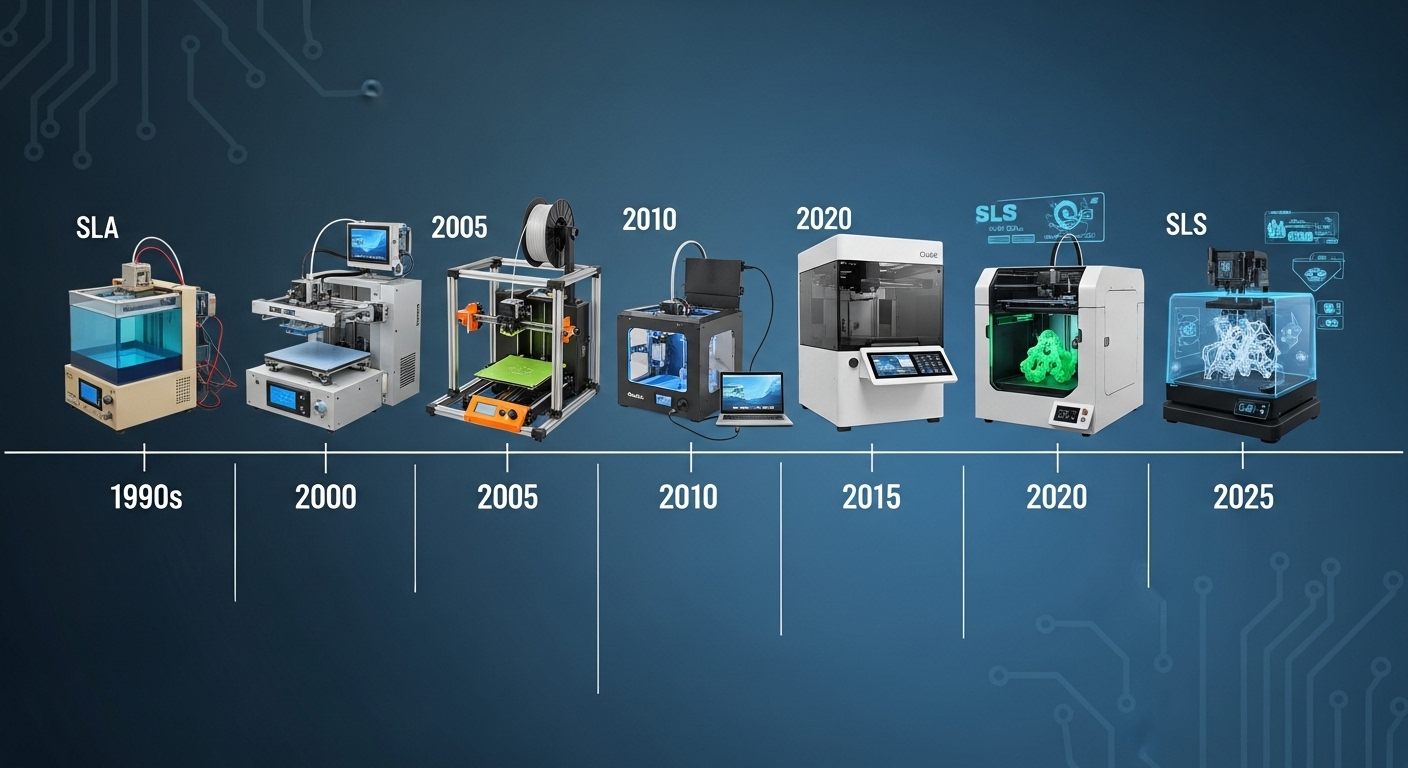Introduction
Once confined to makerspaces and garages, 3D printing has grown into a powerful industrial technology reshaping how products are developed and manufactured. In just a few decades, it has gone from a hobbyist’s curiosity to an essential tool in sectors as diverse as aerospace, healthcare, and consumer goods. This article explores the key milestones in that journey—and where the technology is headed next.
A Brief History of 3D Printing
🕰️ 1980s – The Birth of Additive Manufacturing
- The first 3D printing patent (stereolithography) was filed by Chuck Hull in 1984.
- Early machines were large, expensive, and used primarily for prototyping.
🖨️ 1990s – Industrial Exploration
- Technologies like SLS and FDM emerged.
- Companies like Stratasys and EOS began developing machines for engineering use.
- Automotive and aerospace firms started experimenting with rapid prototyping.
🧑🔧 2000s – Rise of the Maker Movement
- Desktop 3D printers became more accessible, especially with the launch of RepRap (2005).
- Open-source development led to an explosion in hobbyist use and innovation.
- Printable models and communities flourished on sites like Thingiverse.
The Turning Point: 2010s–2020s
As materials improved and costs dropped, 3D printing began moving beyond prototypes and into end-use part production:
- Healthcare: Patient-specific surgical models and implants
- Manufacturing: Jigs, fixtures, and small-batch components
- Consumer products: Custom eyewear, shoes, furniture
- Construction: Experimental 3D-printed homes and concrete structures
The COVID-19 pandemic highlighted the technology’s adaptability when supply chains failed. Print farms across the world rapidly produced PPE, testing swabs, and ventilator parts.
2025 and Beyond: Industrial Maturity
Today, 3D printing has matured into a complementary manufacturing method, often used alongside CNC machining, injection molding, and casting.
Key trends shaping its current role:
- Material diversity: Polymers, metals, composites, ceramics, and bioplastics
- Scalable solutions: Print farms and automated workflows are reducing human input
- Design freedom: Generative design and lattice structures are unlocking new geometries
- Sustainability: Reduced waste and local production support circular economy goals
Impacts on Industry and Innovation
3D printing has:
- Shortened product development cycles
- Reduced tooling and setup costs
- Empowered custom product development at scale
- Made prototyping more accessible to small businesses and startups
It has also influenced how engineers and designers think about products—encouraging lighter, smarter, more efficient design approaches.
The evolution of 3D printing reflects a broader shift in how the world builds things—faster, more flexibly, and with greater adaptability. As this technology continues to integrate into traditional manufacturing and explore entirely new applications, it will reshape expectations across design, logistics, and sustainability.
What began as a tinkerer’s tool has become one of the most versatile and forward-looking technologies of our time.


